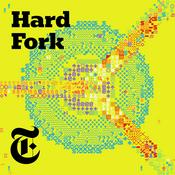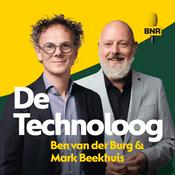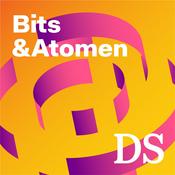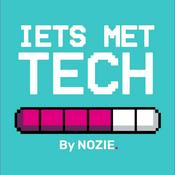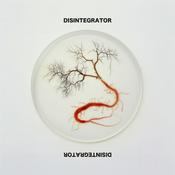309 afleveringen

#309 Jamie Metzl: Why Gene Editing Needs Governance Or We Lose Control
24-12-2025 | 1 u. 10 Min.
This episode is sponsored by AGNTCY. Unlock agents at scale with an open Internet of Agents. Visit https://agntcy.org/ and add your support. Why are AI, biotechnology, and gene editing converging right now, and what does that mean for the future of humanity? In this episode of Eye on AI, host Craig Smith sits down with futurist and author Jamie Metzl to explore the superconvergence of artificial intelligence, genomics, and exponential technologies that are reshaping life on Earth. We examine the ethical and scientific realities behind human genome editing, the controversy around CRISPR babies, and why society is not yet ready to edit human embryos at scale. The conversation unpacks the complexity of biology, the risks of tech driven hubris, and why governance, values, and social norms must evolve alongside scientific breakthroughs. You will also hear a wide ranging discussion on health span versus longevity, AI and human decision making, education and inequality, and how these technologies could either unlock massive human flourishing or deepen existing global challenges depending on the choices we make today. Stay Updated: Craig Smith on X: https://x.com/craigss Eye on A.I. on X: https://x.com/EyeOn_AI

#308 Christopher Bergey: How Arm Enables AI to Run Directly on Devices
19-12-2025 | 51 Min.
Try OCI for free at http://oracle.com/eyeonai This episode is sponsored by Oracle. OCI is the next-generation cloud designed for every workload – where you can run any application, including any AI projects, faster and more securely for less. On average, OCI costs 50% less for compute, 70% less for storage, and 80% less for networking. Join Modal, Skydance Animation, and today's innovative AI tech companies who upgraded to OCI…and saved. Why is AI moving from the cloud to our devices, and what makes on device intelligence finally practical at scale? In this episode of Eye on AI, host Craig Smith speaks with Christopher Bergey, Executive Vice President of Arm's Edge AI Business Unit, about how edge AI is reshaping computing across smartphones, PCs, wearables, cars, and everyday devices. We explore how Arm v9 enables AI inference at the edge, why heterogeneous computing across CPUs, GPUs, and NPUs matters, and how developers can balance performance, power, memory, and latency. Learn why memory bandwidth has become the biggest bottleneck for AI, how Arm approaches scalable matrix extensions, and what trade offs exist between accelerators and traditional CPU based AI workloads. You will also hear real world examples of edge AI in action, from smart cameras and hearing aids to XR devices, robotics, and in car systems. The conversation looks ahead to a future where intelligence is embedded into everything you use, where AI becomes the default interface, and why reliable, low latency, on device AI is essential for creating experiences users actually trust. Stay Updated: Craig Smith on X: https://x.com/craigss Eye on A.I. on X: https://x.com/EyeOn_AI

#307 Steven Brightfield: How Neuromorphic Computing Cuts Inference Power by 10x
16-12-2025 | 59 Min.
This episode is sponsored by AGNTCY. Unlock agents at scale with an open Internet of Agents. Visit https://agntcy.org/ and add your support. Why is AI so powerful in the cloud but still so limited inside everyday devices, and what would it take to run intelligent systems locally without draining battery or sacrificing privacy? In this episode of Eye on AI, host Craig Smith speaks with Steve Brightfield, Chief Marketing Officer at BrainChip, about neuromorphic computing and why brain inspired architectures may be the key to the future of edge AI. We explore how neuromorphic systems differ from traditional GPU based AI, why event driven and spiking neural networks are dramatically more power efficient, and how on device inference enables faster response times, lower costs, and stronger data privacy. Steve explains why brute force computation works in data centers but breaks down at the edge, and how edge AI is reshaping wearables, sensors, robotics, hearing aids, and autonomous systems. You will also hear real world examples of neuromorphic AI in action, from smart glasses and medical monitoring to radar, defense, and space applications. The conversation covers how developers can transition from conventional models to neuromorphic architectures, what role heterogeneous computing plays alongside CPUs and GPUs, and why the next wave of AI adoption will happen quietly inside the devices we use every day. Stay Updated: Craig Smith on X: https://x.com/craigss Eye on A.I. on X: https://x.com/EyeOn_AI

#306 Jeffrey Ladish: What Shutdown-Avoiding AI Agents Mean for Future Safety
07-12-2025 | 58 Min.
This episode is sponsored by AGNTCY. Unlock agents at scale with an open Internet of Agents. Visit https://agntcy.org/ and add your support. Why do some AI agents attempt to bypass shutdown, and what does this behavior reveal about the future of AI safety? In this episode of Eye on AI, host Craig Smith speaks with Jeffrey Ladish of Palisade Research to examine what recent shutdown experiments with agentic LLMs tell us about control, alignment, and the real world limits of current guardrails. We explore how models behave when placed in virtual machine environments, why some agents edit or disable their own shutdown scripts, and what these results mean for researchers working on alignment and oversight. Learn how different models respond to shutdown instructions, how system prompts influence behavior, and which failure modes matter most for safe deployment. You will also hear a detailed breakdown of the experimental setups, insights into tool using and self directed behavior, and a grounded discussion of the risks and opportunities that agentic systems introduce. This episode offers a clear and practical look at how AI agents operate under pressure and what these findings mean for the future of safe and reliable AI. Stay Updated: Craig Smith on X: https://x.com/craigss Eye on A.I. on X: https://x.com/EyeOn_AI

#305 Rakshit Ghura: How Lenovo Is Turning AI Agents Into Digital Coworkers
03-12-2025 | 46 Min.
Why are enterprises struggling to turn AI hype into real workplace transformation, and how is Lenovo using agentic AI to actually close that gap? In this episode of Eye on AI, host Craig Smith talks with Rakshit Ghura about how his team is reinventing the modern workplace with an omnichannel AI architecture powered by a fleet of specialized agents. We explore how Lenovo has evolved from a hardware company into a global solutions provider, and how its Care of One platform uses persona based design to improve employee experience, reduce downtime, and personalize support across IT, HR, and operations. You will learn what enterprises get wrong about AI readiness, why trust and change management matter more than technology, and how organizations can design workplace stacks that meet employees where they are. We also cover how Lenovo approaches responsible AI, how enterprises should think about security and governance when deploying agents, and why so many organizations are enthusiastic about AI but still not ready to adopt it. Rakshit shares real examples from retail, manufacturing, and field operations, including how AI can improve uptime, automate ticket resolution, monitor equipment, and provide proactive insights that drive measurable business impact. You will also learn how to evaluate ROI for digital workplace solutions, how to involve employees early in the adoption cycle, and which metrics matter most when scaling agentic AI, including uptime, productivity improvements, and employee satisfaction. Stay Updated: Craig Smith on X: https://x.com/craigss Eye on A.I. on X: https://x.com/EyeOn_AI
Meer Technologie podcasts
Trending Technologie -podcasts
Over Eye On A.I.
Luister naar Eye On A.I., Acquired en vele andere podcasts van over de hele wereld met de radio.net-app

Ontvang de gratis radio.net app
- Zenders en podcasts om te bookmarken
- Streamen via Wi-Fi of Bluetooth
- Ondersteunt Carplay & Android Auto
- Veel andere app-functies
Ontvang de gratis radio.net app
- Zenders en podcasts om te bookmarken
- Streamen via Wi-Fi of Bluetooth
- Ondersteunt Carplay & Android Auto
- Veel andere app-functies


Eye On A.I.
download de app,
luisteren.



